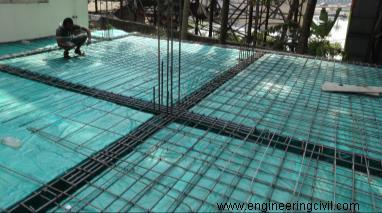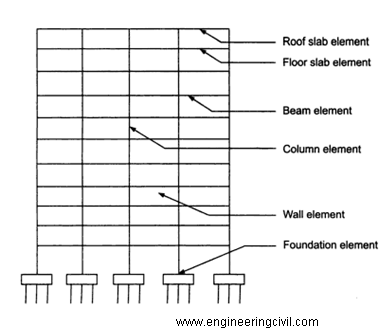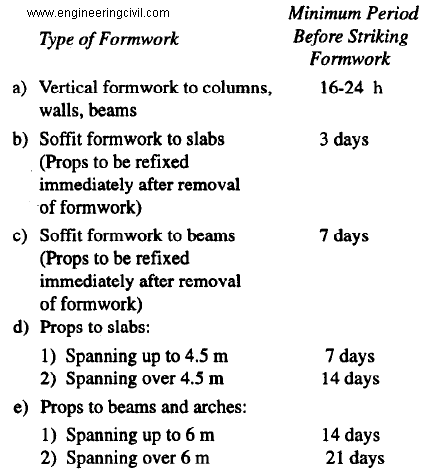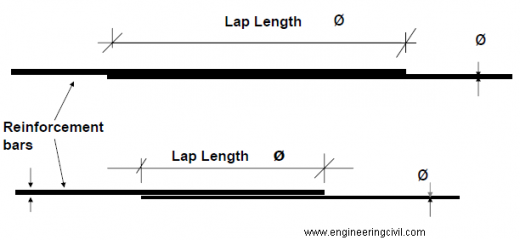Proper Slab Construction Concepts – A Challenge to overcome
What is slab?
A RCC (Reinforced Cement Concrete) slab is the most common structural element of any type of building. Horizontal slabs, typically between 4 and 20 inches (100 and 500 millimeters) thick, are most often used to construct floors and ceilings.Here discussion on “flat slab” has not been considered.


Typical loads to be considered for slab design
(i) Dead load: Any permanent load acting on the slab e.g. self-weight of slab, weight of floor finish & plaster
(ii) Live Load: Any non-permanent or moving load e.g. weight of occupants, furniture, and partitionon the slab
(iii) Snow load (if any)
Note: Earthquake and Wind loads are not considered in the design of slabs.
Slab construction: Busting myth
| S. No. | Myth | Actual |
| 1 | Slab design would change based onearthquake zoneof the location where my building will be constructed. Thus in more earthquake prone zones, more rebar should be used in slab. | Slab design will always be similar anywhere in India because it has no relation to the earthquake zone of location where your building will be constructed. |
| 2 | More rebar in slab would make it more strong and durable. | Placing more rebar/less spacing than required leads to higher crack width formation in slab because the higher weight of rebar would lead to higher deflection. |
| 3 | Minimum 8mmdia rebar is required for slab construction. However, it is better if 10mm or 12mm diarebar can be used with spacing of 100-125mm (4-5’’) between rebar. | For general residential construction, 8mm rebar placed @ 150 mm (6’’) apart (centre-to-centre) is sufficient as main rebar and binders(a). [Even 6 mm rebar placed @ 150 mm (6’’) centre-to-centre is sufficient as binders(a)] |
| 4 | 100 mm slab depth is sufficient for residential construction which is alsovalid for any size of slab panel. | 100 mm (4 inches) slab depth is sufficient for up to 12ft x 12ft maximum slab panel size(b). Slab depth needs to be increased to control deflection, if slab panel size(b) increases. Other than that, roof slab depth can be increased for better comfort during summer season, without changing the no of rebars for slab (refer topoint 3). |
| 5 | If size of slab panel increases, increase rebardia to 10mm and 8mm, without changing slab depth. | The depth of slab needs to be increased if slab panel size(b) increases, but rebar requirement remains the same for slab (refer to point 3). |
| 6 | 20mm clear cover in slab is sufficient. | 20mm clear cover is sufficient for intermediate floor slabs, and 30mm clear cover should be provided for roof slab exposed to rain(c). |
| 7 | The rebar used in the slab have resulted in the formation of cracks. | There is no known influence of quality of rebar on the development of cracks in slabs, unless the rebar is of too inferior strength than required. Factors such as: Building design not factoring the safe bearing capacity of soil, differential settlement of footings and wrong design engineering, poor construction practices (such as improper concrete mix proportioning, higher water-cement ratio, improper compaction, inadequate curing, improper construction joint treatment) are in general responsible for the development of cracks in the slabs. |
Recommended slab construction practices:
1. For lapping/ joining of rebar, a minimum lap length of 57 x diameter of rebar should be provided(a). Thus 1.5ft lap length will be required if you are using 8mm diarebar. Lapping should preferably be avoided at centre of slab panel.
Note: Lapping refers to the joining of rebars to achieve the desired continuity.
2. The guidelines of minimum period before striking/removal of soffit shutter and vertical props of slab and beam as per BIS are as follows:

3. Slab curing should be done for minimum of 14 days from date of casting, as per BIS. It is recommended to do curing for a period of 28 days.
4. During waterproofing treatment of roof slab, mix standard waterproofing compound with concrete and apply on slab in ½’’ to 1’’ layer in single pour without any time lag between laying the mix (with supporting props in position). This is to avoid any construction joint in the waterproofing layer. (This layer to be poured in a bit slope to ensure proper drainage)
5. To accelerate setting of concrete in heavy rainfall/snowfall prone areas, standard accelerating admixture complying with BIS9103 may be used.
NOTE:
(a) Design is suggested considering M20 grade of concrete (cement:sand:stonechips=1:1.5:3)and Fe500(D) grade of HYSD rebar
(b) Slab panel size means the centre-to-centre dimensions of the space enclosed by beams
(c) For slab exposed to severe rainfall, BIS recommends 45mm clear cover.


No comments: